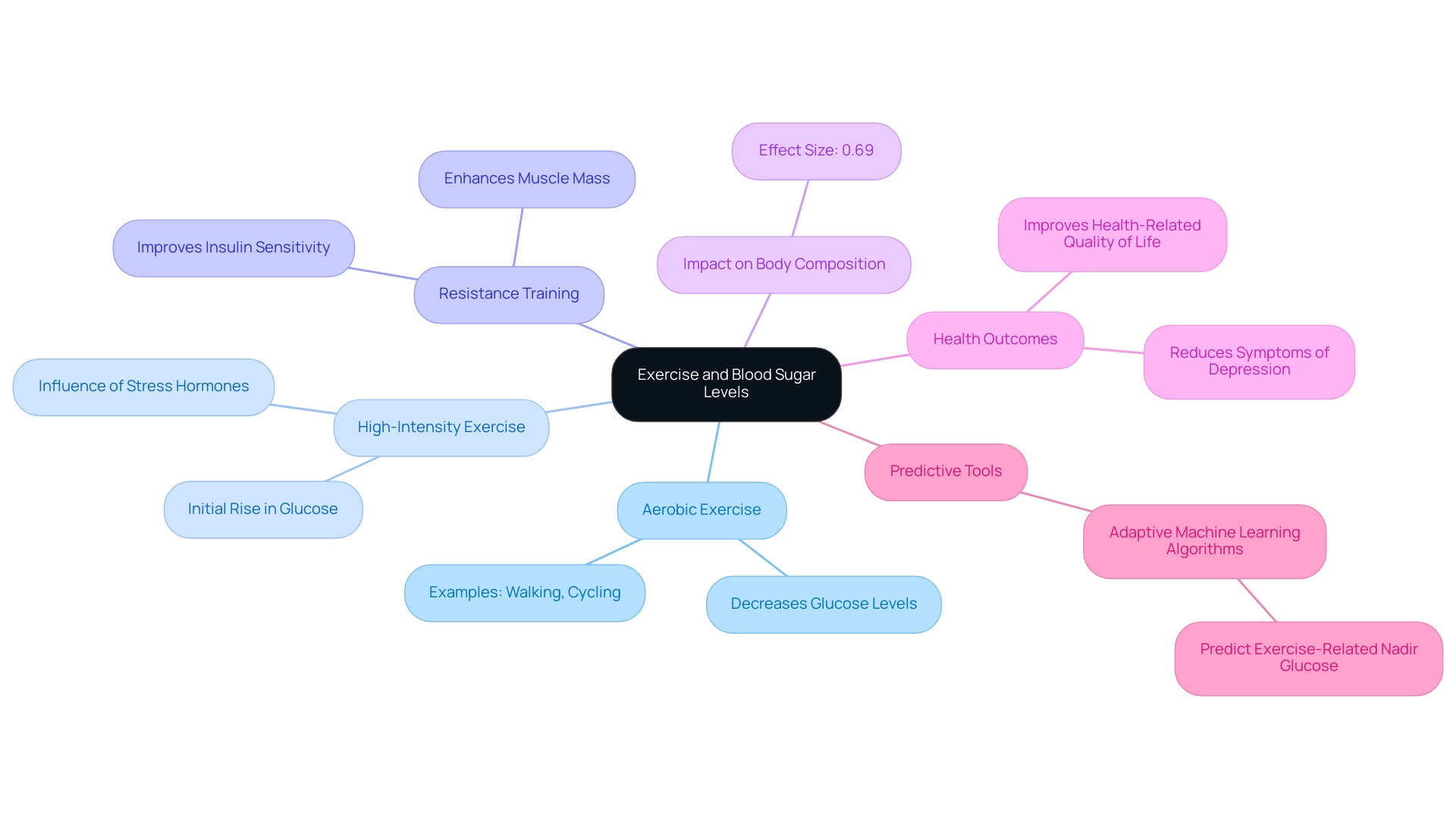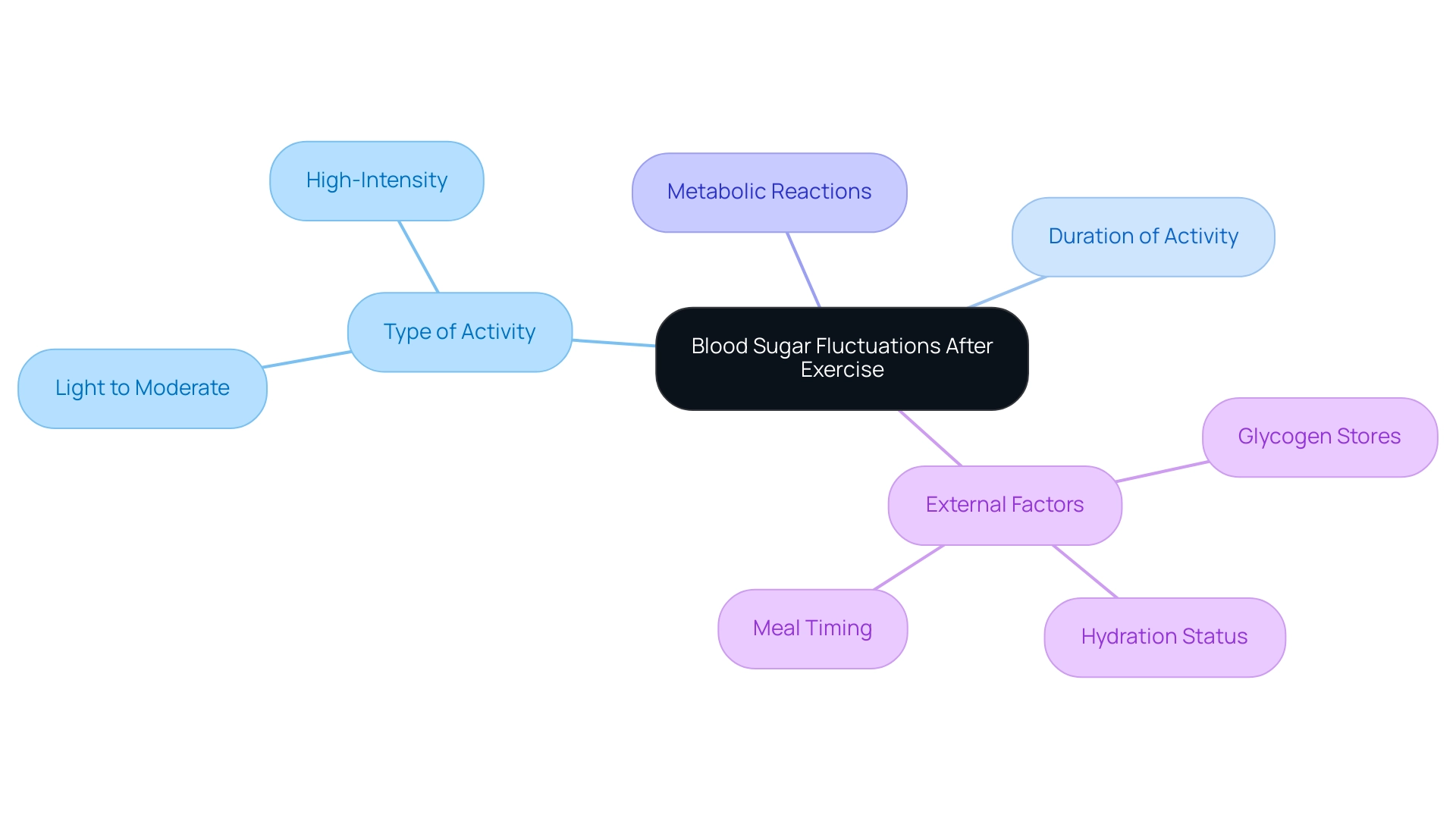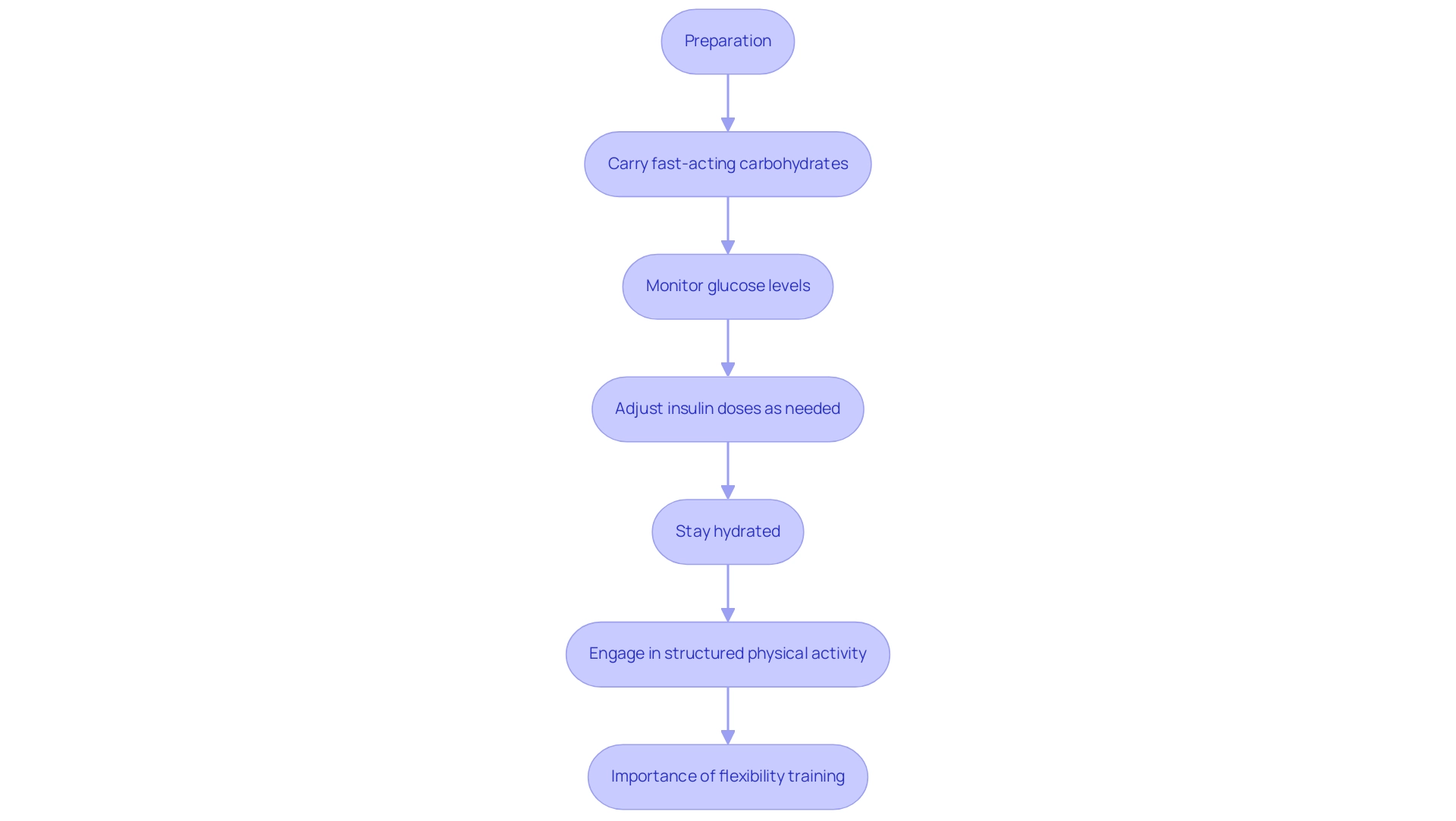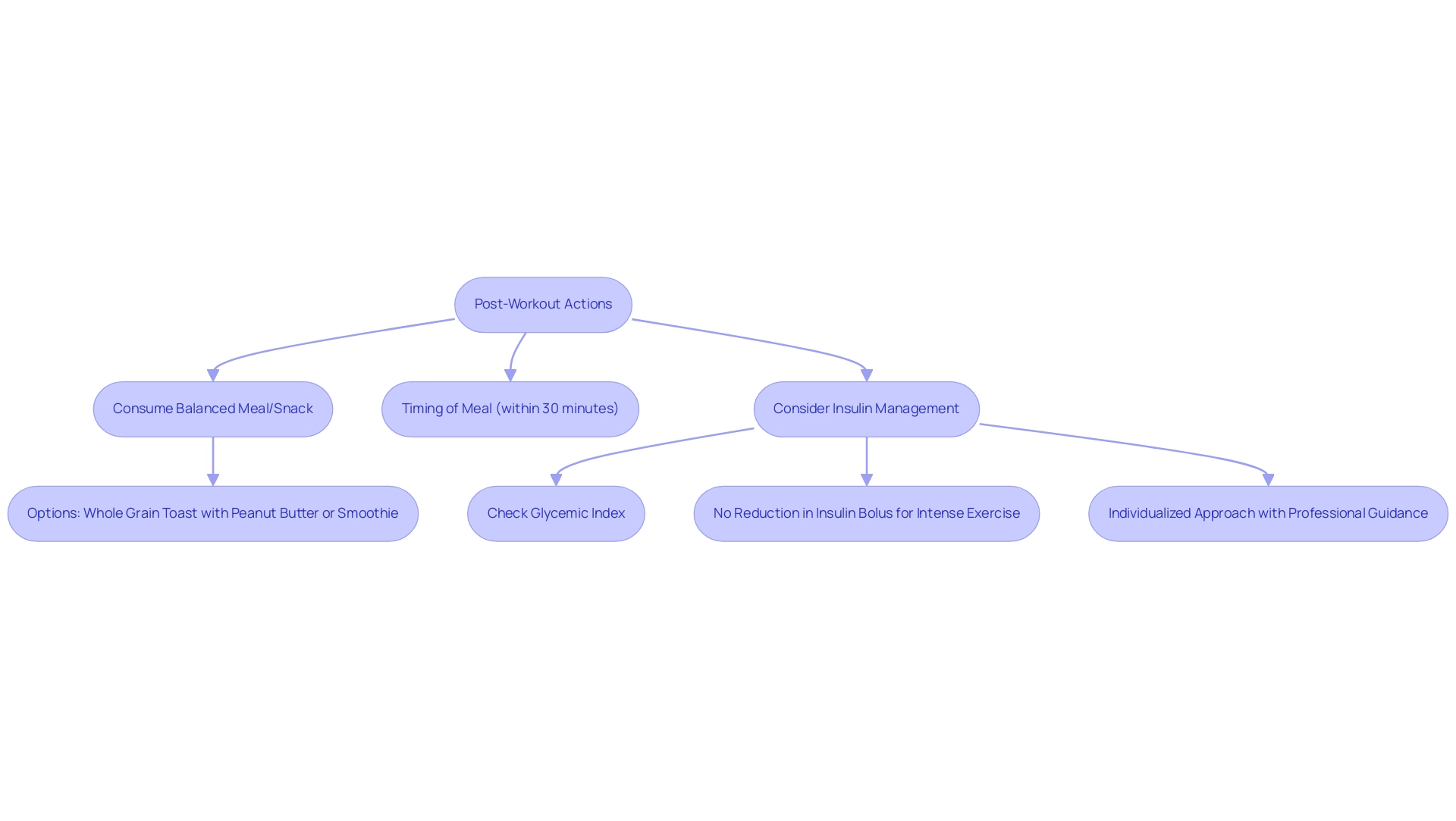Overview:
Understanding after exercise blood sugar levels is crucial for fitness enthusiasts, especially those managing type 2 diabetes, as different types of physical activities can significantly influence glucose regulation. The article highlights that aerobic exercises generally lower blood sugar levels, while high-intensity workouts may temporarily increase them due to stress hormone release, emphasizing the importance of tailoring exercise and nutrition strategies for effective glucose management post-exercise.
Introduction
The relationship between exercise and blood sugar management is a critical area of focus for individuals living with type 2 diabetes. Regular physical activity not only enhances the body’s ability to utilize glucose but also plays a vital role in maintaining optimal blood sugar levels. Different forms of exercise can yield varying effects; while aerobic activities tend to lower blood sugar, high-intensity workouts may cause temporary spikes.
Understanding these dynamics, including the implications of post-exercise nutrition and hydration, is essential for effective diabetes management. As new insights emerge, including advancements in personalized exercise plans and nutrition strategies, individuals are better equipped to navigate the complexities of their health.
This article delves into the multifaceted connection between exercise and blood sugar control, offering valuable guidance for those seeking to improve their overall health outcomes.
The Connection Between Exercise and Blood Sugar Levels
Physical activity is a crucial factor in managing after exercise blood sugar levels, particularly for individuals with type 2 diabetes. Participating in consistent exercise allows muscles to use glucose more effectively, thereby helping to lower after exercise blood sugar levels and leading to reduced glucose concentrations. Different types of exercise can produce varied effects on glucose control.
- Aerobic exercises, like walking or cycling, are commonly linked to decreases in glucose levels, which positively affect after exercise blood sugar levels, making them perfect for enhancing glycemic regulation.
- In contrast, high-intensity exercise may initially raise glucose levels, which can influence after exercise blood sugar levels due to the release of stress hormones during exertion.
- Resistance training also plays a vital role, as it not only enhances muscle mass but also improves insulin sensitivity, which can help regulate after exercise blood sugar levels.
Significantly, a recent study revealed an effect size of 0.69 for body fat percentage in the intervention group, emphasizing the substantial influence of physical activity on body composition, which is essential for effective glucose management. Moreover, retinopathy is a condition that forecasts cardiovascular mortality in people with type 2 diabetes, emphasizing the significance of sustaining optimal glucose concentrations through physical activity. Recent advancements in adaptive machine learning algorithms have shown promise in predicting exercise-related nadir glucose levels with high accuracy, offering valuable insights for managing diabetes effectively.
As T2DSolutions initiates as a new resource center for type 2 and type 3 diabetes education and community support, it will offer tools and resources, such as personalized activity plans and educational materials, to assist individuals in customizing their routines to enhance glucose management. Understanding these dynamics is essential for individuals looking to improve their after exercise blood sugar levels and overall health outcomes. As noted by experts in the field, 'Increased physical activity and fitness can reduce symptoms of depression and improve health-related quality of life in those with type 2 diabetes.'
By considering the specific impacts of various physical activities, individuals can make informed decisions that support their overall health and glucose management goals.

Understanding Blood Sugar Fluctuations After Exercise
Post-activity glucose concentrations can show considerable variations, affected by several elements including the kind of activity undertaken, its length, and personal metabolic reactions. Studies suggest that light to moderate physical activity generally results in a gradual decrease in glucose concentrations, whereas high-intensity workouts might cause a temporary rise in glucose. Factors such as glycogen stores, hydration status, and meal timing further contribute to these variations.
Notably, a recent study highlighted that glucose levels before breakfast increased by an average of 0.89 mmol/L when compared to the lowest nocturnal values. This highlights the significance of comprehending these variances for effective management of after exercise blood sugar levels. Furthermore, physical activity can attenuate meal tolerance and significantly affect glycemic homeostasis, which is critical for individuals managing type 2 diabetes.
The case study titled 'Postprandial Glucose Response Measurement' offers valuable insights into the dynamics of glucose response after food consumption, enhancing the comprehension of post-exercise sugar management. As Kumpei Tokuyama, a prominent researcher at the International Institute for Integrative Sleep Medicine, mentioned, 'The impact of variations in the timing of physical activity on glucose fluctuation may be attributed to differences in glucose changes during physical activity.' Recognizing these dynamics is crucial for individuals managing type 2 diabetes, particularly in light of findings that acute moderate-intensity aerobic exercise before breakfast can mitigate the morning rise in glucose levels, thereby enhancing overall glycemic control.
T2D Solutions is committed to being a comprehensive resource for newly diagnosed patients, providing expert insights and community support to help navigate these complexities. We provide educational materials on managing after exercise blood sugar levels and share success stories from patients who have effectively utilized our resources. Further expert opinions on elements affecting glucose fluctuations after exercise would enhance this discussion.

Managing Blood Sugar Levels During Physical Activity
Td Solutions is proud to launch as a new resource hub dedicated to education and community support for individuals managing type 2 and type 3 diabetes. Our platform will offer customized resources, including personalized exercise plans, nutritional advice, and access to expert consultations, all focused on effective glucose management. Monitoring glucose values before, during, and after exercise blood sugar levels is essential for individuals with type 2 diabetes.
We recommend carrying fast-acting carbohydrates, such as glucose tablets or sports drinks, to quickly counteract any potential hypoglycemia that may occur during or post-exercise. Adjustments to insulin doses may also be necessary, tailored to the specific type and intensity of the physical activity undertaken. Furthermore, hydration is crucial; remaining well-hydrated and being aware of the body's signals can enable real-time modifications to avert both spikes and declines in glucose concentrations.
Melanie B. Gillingham, PhD at Oregon Health and Science University, emphasizes the significance of structured physical activity, noting that 'more time in range during days with structured physical activity vs. sedentary days in adults with type 1 diabetes.' This insight underscores the broader applicability of structured physical activity in effectively managing blood sugar levels after exercise for individuals with type 2 diabetes. Recent studies suggest that structured physical activity can lead to clinically significant improvements in glycemic control, particularly in relation to after exercise blood sugar levels, reinforcing the necessity of regular movement.
Furthermore, individuals with diabetes may experience structural changes to joints that limit movement, as highlighted in the case study on orthopedic limitations. This requires a focus on low-impact activities and consistent flexibility training, illustrating that involvement in physical activity is not only feasible but should be promoted as a crucial element in attaining optimal glycemic control. T2DSolutions is here to support you with the latest guidelines and clinical findings.

Nutrition Strategies for Post-Workout Blood Sugar Control
As T2DSolutions launches as a new resource hub for Type 2 and Type 3 diabetes education and community support, it is essential to focus on effective management strategies, especially after exercise. After physical activity, it is crucial to prioritize the replenishment of energy reserves and the stabilization of after exercise blood sugar levels. Consuming a balanced meal or snack that includes an appropriate combination of carbohydrates and protein is ideal.
For example, choices such as whole grain toast spread with peanut butter or a smoothie containing fruits and protein powder can assist in replenishing glycogen while reducing the chance of glucose spikes. Timeliness in nutrition is paramount; it is advised to consume these meals within 30 minutes to help regulate after exercise blood sugar levels and optimize recovery. Moreover, comprehending the glycemic index (GI) of foods is essential; choosing lower-GI options can promote a gradual release of glucose into the circulation, thus assisting in the upkeep of stable glucose levels.
It is important to note that for intense aerobic or anaerobic activity lasting 30 minutes, no reduction in insulin bolus is recommended, as this can significantly impact after exercise blood sugar levels. Research indicates that an individualized approach, potentially guided by a diabetes-knowledgeable physiologist or certified fitness professional, can enhance both safety and effectiveness in physical activity and nutrition management for newly diagnosed patients managing Type 2 diabetes. Additionally, a case study titled 'Medication Effects on Physical Activity' emphasizes the necessity of individualized medication management during physical activity, ensuring safety and effectiveness for individuals with diabetes.
Stay tuned for more content as T2DSolutions develops, and consider subscribing to receive updates and connect with a community of support for newly diagnosed patients.

Debunking Myths: Why Exercise Can Spike Blood Sugar Levels
Welcome to T2DSolutions, your new resource hub for empowering diabetes management through education and community support. Contrary to the common notion that all types of physical activity universally reduce glucose concentrations, high-intensity workouts can actually induce a temporary increase in glucose due to the release of stress hormones, such as adrenaline and cortisol. Research indicates that these fluctuations are a normal physiological response to intense physical exertion.
For instance, a study by Gillen JB et al. demonstrated that acute high-intensity interval activity significantly reduces postprandial glucose response in individuals with type 2 diabetes. Moreover, the average Mean Amplitude of Glycemic Excursion (MAGE) following physical activity was documented at 3.73 ± 1.98, emphasizing the fluctuations in glucose concentrations after the activity.
A study involving individuals with Type 1 diabetes showed that after exercise blood sugar levels increased more significantly in the diabetic group following high-intensity cycling, remaining elevated for two hours compared to normal controls. This real-world example underscores the importance of understanding how different bodies respond to intense workouts. Comprehending these spikes is vital for regulating expectations and reactions to physical activity.
It allows individuals to concentrate on the long-term benefits of physical activity rather than being discouraged by short-term fluctuations. As O Peter Adams, a faculty member at the University of the West Indies, aptly stated,
HIE is unlikely to cause hypoglycemia during and right after physical activity.
This expert insight emphasizes the importance of education and awareness, which is a cornerstone of T2DSolutions' commitment to empowering diabetes management through comprehensive resources and community support.
By clarifying misunderstandings regarding physical activity and glucose management, T2D Solutions seeks to promote safe and effective fitness practices. Furthermore, it is essential to recognize that not all exercise will lead to lower blood sugar levels after exercise, and being informed about these myths can empower newly diagnosed patients in their diabetes management journey. To stay updated on the latest resources and insights, subscribe to our newsletter and join our community at T2 Solutions.

Conclusion
Understanding the relationship between exercise and blood sugar management is vital for individuals with type 2 diabetes. Regular physical activity enhances glucose utilization and helps maintain stable blood sugar levels. Different types of exercise yield varying effects; aerobic activities generally lower glucose levels, while high-intensity workouts can cause temporary spikes due to stress hormones. Therefore, monitoring blood sugar levels around exercise is essential.
Post-exercise nutrition also plays a crucial role. Consuming a balanced meal with carbohydrates and protein shortly after activity helps stabilize blood sugar and replenish energy stores, reducing the risk of spikes.
It is important to debunk common myths regarding exercise and blood sugar responses:
- Not all exercise will result in lower blood sugar levels.
- Understanding this can help set realistic expectations for individuals managing their diabetes.
In conclusion, a comprehensive strategy that includes tailored exercise, effective post-workout nutrition, and education on blood sugar dynamics is crucial for managing type 2 diabetes. Leveraging resources from platforms like T2DSolutions can empower individuals to navigate their health challenges, leading to improved outcomes and quality of life. Prioritizing these approaches fosters proactive engagement in diabetes management and enhances overall well-being.



